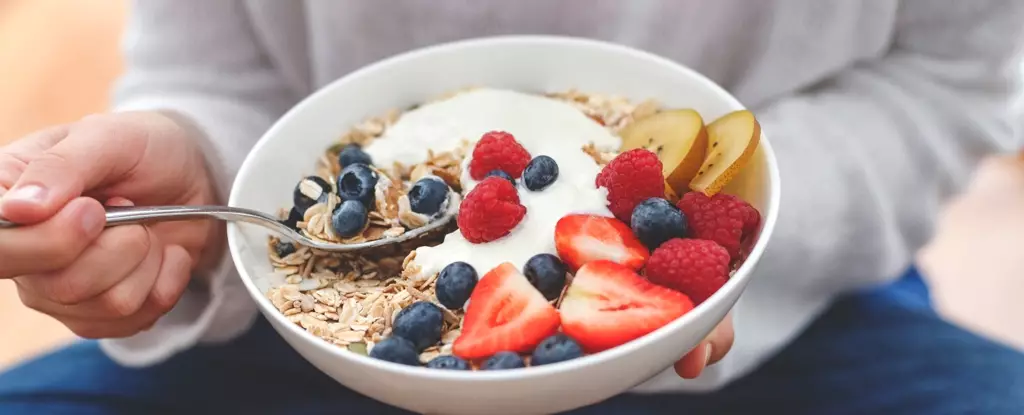In recent years, the spotlight on dietary fiber has intensified, fueled by emerging research that highlights its critical role in gut health and overall well-being. We are witnessing a paradigm shift in nutritional science where fiber is garnering attention equivalent to that of protein. New studies and findings suggest that not all fibers are created equal; in fact, the type of fiber consumed may drastically impact our body’s ability to maintain weight and regulate blood sugar levels. As we venture further into this fiber revolution, it becomes imperative to scrutinize which fibers are genuinely beneficial in the context of nutritional science.
Insights from Mouse Studies
A notable study published in 2024 sheds light on the variance in efficacy among different types of fiber. Conducted by researchers at the University of Arizona and the University of Vienna, it focused on beta-glucan, a specific fiber sourced predominantly from oats and barley. This study revealed that beta-glucan not only assists in weight loss but also plays a crucial role in blood sugar regulation in mice subjected to a high-fat diet. Unlike other fiber types such as wheat dextrin and pectin that failed to show significant weight reduction, beta-glucan demonstrated a remarkable biological impact, namely decreasing body fat within an 18-week timeline.
The implications of these findings challenge previously held assumptions about dietary fibers. Researchers assumed that all types of fiber would provide similar benefits; however, the exclusivity of beta-glucan in affecting body composition highlights a need for a more tailored approach to dietary recommendations. It raises essential questions about how different fibers interact with our gut microbiome and how they can be leveraged to promote health.
The Microbiome Connection
Dietary fibers serve as vital energy sources for gut bacteria, yet a staggering statistic reveals that less than five percent of Americans meet the recommended daily fiber intake of 25-30 grams. This gap opens the door to a burgeoning market for fiber supplements and artificially fortified foods. However, as we navigate this new landscape, understanding the diversity among fiber types becomes essential.
Some fibers, such as beta-glucan, are water-soluble and easily fermentable by gut bacteria. This solubility allows them to modify microbial communities in the intestines effectively. On the other hand, insoluble fibers like cellulose may merely serve as bulk to aid in digestion, not providing the profound metabolic benefits we seek for weight control and glucose regulation. Thus, the challenge remains: how do we select the right type of fiber for optimal health outcomes?
The Role of Microbial Diversity in Weight Loss
A crucial takeaway from the aforementioned research is the role of specific gut bacteria—most notably, a type called Ileibacterium. The study indicated a significant increase in the presence of this bacterium in mice given a diet rich in beta-glucan. Previous research has linked Ileibacterium to weight loss, suggesting that the benefits of fiber may extend beyond mere calorie management.
Evidently, as early as 10 weeks, mice consuming beta-glucan exhibited reduced body weight and fat content compared to those on other fiber types. They didn’t just experience changes in their weight; their metabolic functions improved, signaled by increased levels of butyrate—an essential short-chain fatty acid produced during fiber fermentation. This compound is known for its healthful properties, promoting gut barrier integrity and potentially influencing appetite regulation through gut-brain pathways.
Beyond the Shannon Index: The Need for Specificity
What remains clear is that the fiber dialogue can’t simply focus on quantity; it must emphasize quality and specificity. While dietary fibers are undeniably important, public health strategies must evolve to reflect the complexity of fiber types. Understanding the nuanced effects of various fibers may empower consumers to make more informed dietary choices, thereby positively affecting public health outcomes.
Frank Duca, a biomedical scientist involved in the study, aptly summarizes this paradigm shift: while we recognize the importance of fiber, the quest is to identify the most beneficial forms that can effectively support weight loss and glucose homeostasis. This pursuit is essential not only for individual health outcomes but also for shaping nutritional guidelines and agricultural practices going forward.
As research in this area unfolds, it sets the stage for a future where dietary recommendations are not just blanket statements about fiber intake but rather tailored suggestions centered around specific fiber types that can meaningfully impact health. The era of “one size fits all” in nutrition may finally come to an end, ushering in a more personalized, effective, and insightful approach to dietary fiber.

